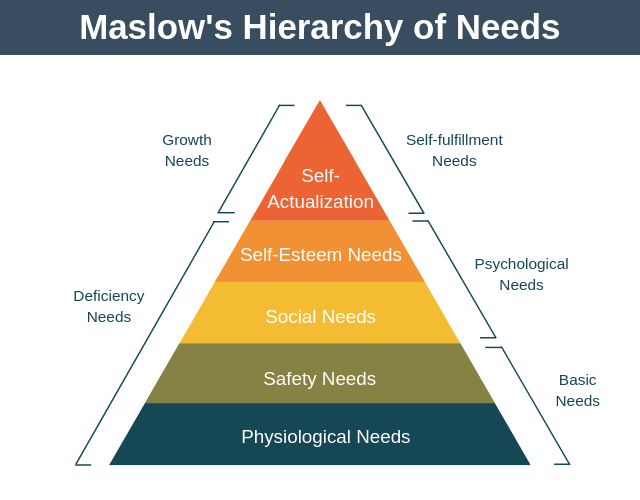It’s no secret that “Digital Transformation,” the latest zeitgeist of cloud initiatives and source of new Titles at large companies has, the majority of the time, failed to achieve its objectives. Unfortunately, “Digital transformation” has turned into a widget instead of a leadership tool and a real opportunity, often times turning into a thinly veiled “throw everything on the cloud” initiative.
IT is suffering from an identity crisis, facing a duality of roles as both janitor and business leader, with each company having its own unique culture and opinion on how IT should look.
I want to share three insights that will help us understand that this “new problem” isn’t so new. After all, take the word digital away, and we are back to “transformation”.
Common Mistakes That Lead To Digital Transformation Failure
“A fast car doesn’t make a good driver”.
Often, “digital transformation initiatives” are met with large budgets and spending activities in various forms of infrastructure, applications, and a whirlwind of activity. AWS has built its entire sales engine on this model of selling innovation. “Use AWS for the latest in machine learning,” “Don’t get left behind.” These tools often get applied spuriously or not used at all after considerable time and effort, and you land exactly where they want you – in their infrastructure. The central insight here is that throwing money at the problem will not solve it – Yes, there will likely be some spending involved, but we will talk about that in a bit and go on to build a race team that wins championships.
“A house built on sand will surely blow away with a great storm.”
When you bought your home, did it have a tag on it saying that it would leak once every two years, or did that surprise you when it flooded? Many topline digital transformation efforts focus on innovation but fail first to address or to help define fundamental business needs and business expectations. It doesn’t matter what you are doing, if you are not meeting essential business needs, then the business will fail, and you will fail. If you do not meet the business expectations (many stakeholders can be involved in this with differing opinions), your efforts will show as partial and incomplete. The result often shows up in unforeseen expenses, budgetary competition, security events, disasters, and outages.
Maslow’s Hierarchy Matters in Digital Transformation
The transformation of an organization of any size resides within the hearts of the people. You could think of it as the “self-actualization portion of the pyramid” of many individuals, pointed towards a common goal. Maslow’s Hierarchy of Needs is a fascinating study of humans’ needs and wants. It shows us a few powerful insights:
- When a deficit has been “more or less satisfied”, our activities become habitually directed towards the next set of needs that we have yet to satisfy.
- Growth needs continue to be felt as the hierarchy is satisfied and may become even stronger once they have been engaged.

In addition to Maslow’s Hierarchy of Needs, there are well-documented organizational hierarchies of needs, but we will boil it to the 4 points below. It is important to note that the organizational hierarchy of needs must also meet the individual hierarchy of needs that make up that organization successful.
Each business is different, so there is no universal set of business needs and expectations. What is global, however, is the need to define these items, set expectations with stakeholders, and adequately support those expectations. The burden of managing expectations falls on the shoulders of leadership to establish and help to enable employees to move outside of “survival mode.” Let’s look at these things starting from the bottom:
Tips for a Successful Digital Transformation: Defining Needs & Expectations
-
(Deficiency Needs) Business Needs
These would be the needs that, if not met, would cause the business to falter and either stunt growth significantly or fail by not meeting their core mission. For a hospital, 100% Uptime and Security due to HIPAA are Business Needs. When systems go down while people are on tables, people die. Since Hospitals are in the life-saving business, people dying is a failure of meeting the business needs.
Uptime requirements may not be the same for an accounting firm. If there were a systems outage for a day, it may not be the end of the world, although it would be annoying. A private client financial data breach, however, would create a very precarious situation for this firm. They could lose their reputation and business.
Emergent threats can often create needs as brands and service lines evolve. There are many different schools of thought as to what direction to go: the safe route or not, but to be successful in the transformation, you must set business needs objectives and first fulfill those.
-
(Deficiency Needs) Business Expectations
Ah, the burden of expectations. You run the tightest IT ship in the world from a security perspective, but when Office 365 goes down, your CEO thinks that you are a clown. The needs and expectations of a business are two drastically but equally important things.
Is the Wifi too slow? Does email need to be up 100% of the time? Are we okay with a 5-minute outage? How about a day? A week? Is your IT staff member allowed to take a vacation and turn his phone off?
Will it destroy our brand as an IT department if we lose all of our data? What about if someone else gets a hold of it? Maybe the CFO at your current company knows how much his last company spent on IT and thinks you shouldn’t be spending anymore. When the expectations of the business collectively, which include individuals and leaders, are not met – your transformation efforts will be doomed to fail.
-
(Growth Needs) Business & Personal Wants
The prior two “Deficiency Needs” categories are largely janitorial work and dealing with people’s opinions. Until the organizations meet the needs, the personal wants hardly enter the picture. At this point, we can start to look at the nice to have. Automation and scripting to make your life easier? Hyperconverged infrastructure for no patching? Cloud this or that? Each new want must first go through the “approval process” of the lower needs. This approval process happens in our brains automatically but can often create situations at odds.
-
(Growth Needs) Business & Personal Strategic Goals
Accomplishing strategic goals is where your fabled “digital transformation” lay. Those goals are different for every organization, but realizing these goals lies at the cross-section of resources and innovation. Emergent innovation is created by empowering your people to move beyond “keeping the lights on” by fundamentally solving the most basic needs of their job function.
Tying It All Together
Leaders need to be rigorous about seeing that they meet deficiency needs, and then let their employees shine with the growth needs with proper oversight. At this point, your IT department, with a survey, shouldn’t feel like nuclear plant operators at Chernobyl. The bare infrastructure requirements should feel trivialized, and the business is starting to optimize.
Understanding that as a leader in a transformation initiative, you need to be pushing support for basic needs and creating a proper experience, then letting your team grow and surprise you is the key. Most transformations fail to reach this stage or beyond because the management fails to understand the fundamental principle that your employees don’t work for you; you work to meet their basic needs and allow them to grow. A service leadership mentality, such as this, is the most fundamental key to success in any transformation.
If you don’t have the proper support structure in place, you will fail. If your IT employee doesn’t feel like he can take a vacation, you will fail. For IT specifically, it all starts with a degree of definition and delivery of reliability, security, and performance/accessibility for the business. Throwing money at the problem will fail to pass the test of Expectations.
Many leaders have falsely seen the cloud as a solution to buy innovation and digital transformation, while the real answer is much simpler. It’s about building a reliable infrastructure that meets the basic needs of the business, and it’s about the people. With a finite amount of money to spend, these objectives must be weighed and brokered and rigorously enforced not to subject your teams to unfair scrutiny. Be a protector and enabler. Often we find old solutions to new problems, and I find that we can probably drop the word “digital” and start having a rational conversation about how to empower transformation in IT.
A Scorecard for Governance and Identity
Our growth journey started by building an entirely fault-tolerant infrastructure with zero compromises. To provide ongoing governance to our identity and to further foster its growth, we developed a scorecard on which we score everything that we do: easy, fast and reliable. Many elements lie under this scorecard, but it is evaluated for every design decision, purchasing decision, and customer interaction.
That scorecard was the foundational definition of the needs of our organization. That allowed us to build and self-actualize our world unique delivery models such as Colo+ – the first fully managed data center experience in the world, from there. This identity allowed us to make some compelling organizational decisions that are not just influencing how we operate but also how our customers architect their infrastructure.
If you would like to learn more, please feel free to reach out to schedule a meeting and learn more about our transformation journey.







